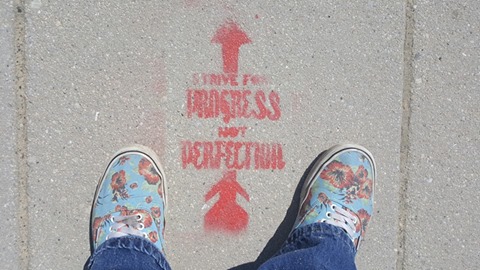Wayfinding and Road Opening

The other day I tweeted: “Road Opening is great, but eventually you need to lay off the optionality and do some Wayfinding.”
Since the publication of Chaos Protocols there has been a big increase in people asking about Road Opening magic. In that book Gordon ties Road Opening to the investing concept of Optionality, the idea that there is an asymmetric upside to more options. Investing a little in many places limits losses to just what you invest, but opens up potential gains of many hundreds of times the potential investment when one pays off. Life works the same way, cities have higher optionality than small towns etc.
Traditionally speaking, Road Opening magic has two functions: it clears obstacles from a road you are already walking and it opens new roads that you are not yet on. Lately people seem to be focusing on the latter, which I think is quite good. Strategic approaches are great if you know how to navigate to your destination and need some help, but many people are trapped in circumstances where they can see no way out or simply do not have the foggiest idea of how to begin. Road Opening for new options is a great way to free yourself from being stuck. Even when not stuck, investing a small bit in many different options can yield some amazing results and show you roads you never thought of.
But too many options in life can actually be a bad thing. Marketers know that presenting a customer with too many options in one type of product will result in declining sales for that product type overall. People get paralyzed by FOMO, feel pressured to make the best choice, and generally get exhausted by all the options.
So what is there between Navigation and Road Opening? Wayfinding.
According to Bill Burnett and Dave Evans* “Wayfinding is the ancient art of figuring out where you are going when you don’t know your destination. For wayfinding you need a compass and a direction. Not a map – a direction”. I have found this concept to be quite helpful ever since I more or less rejected the concept of final destinations materially or spiritually.
ORIENTATION: Wayfinding in design starts with orientation: where are you now. This is probably why “Know Thyself” was written over the doors to the temple at Delphi, and why it was repeated as an axiom so often that it has literally been attributed to almost every Greek Philosopher at one time or another. If you don’t know where you are, wayfinding is pointless. Even if you have a map, you can’t find your way without the little “You are here” dot. I recommend about 40% introspection, 40% conversation, 10% meditation, and 10% divination for orienting yourself honestly. The introspection is for you to analyse what has happened in your life thus far and get a real sense for what you have accomplished, and what from that you actually enjoy. The conversation is because we are all liars, most of all to ourselves. Talk to the people who know you best and see what they think. Throw it up against what you think. You still won’t arrive at the truth, but its better than just navel gazing and believing your own BS. The meditation helps you actually get enough distance from what you think about you and what others think about you in order to look at it without filling up with pride, defensiveness, attachment, or anger. Divination is for those little bits that nobody sees, and places it all in context.
DIRECTION: Once you are oriented you not only have a general sense of what you want, but a good idea of what engages, excites, and energizes you. This is where you want to go. In the last two days I have given two consultations and both clients have roads open to them that would give them, at least immediately, a higher level of financial reward and worldly respect than the roads that truly engaged them. This is the direction that they needed to go. Walking the path that engaged them though will be tougher than the more well-trod path. There is no map for what either of them want to do.
When Polynesian voyagers needed to find their way across the pacific they used the surface of the water itself to find their way. They learned to scan the water to see if an island blocked, reflected or refracted waves. They could see the cloud formations that only happen over mountains, and even reflections of land in clouds. Add a compass and some star charts to that kind of knowledge of terrain and you can have confidence that even if you wind up somewhere terrible, you can get yourself out of it and on a different heading.
Does our excitement and engagement for our direction meet with reflected waves that tell us rewards are up ahead, or is it met with empty calm because an island is behind us? There have been many times I have been engaged or exited about a road, but had my efforts met with lackluster response. Each time I backtracked just a little, and adjusted my heading, only to find myself a route that was both rewarding and engaging. Still no final destination, but I am not worried about such things. I have given up on following someone elses path to perfection. All I want is progress in my way.
*Designing Your Life
